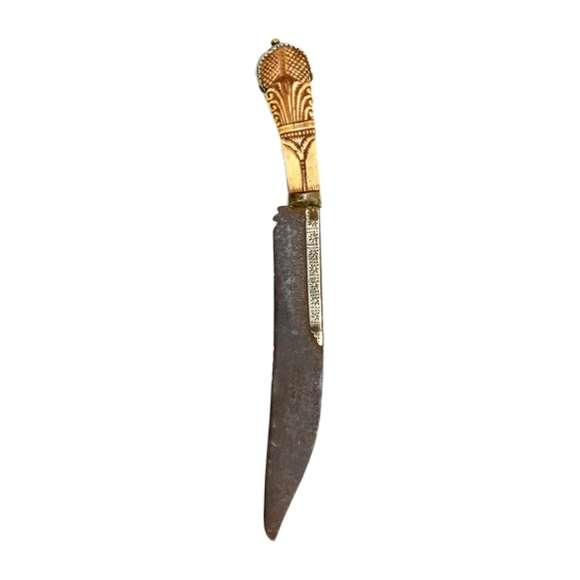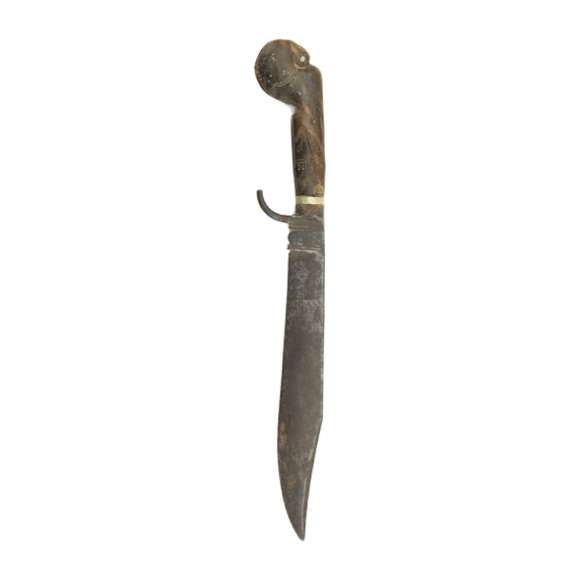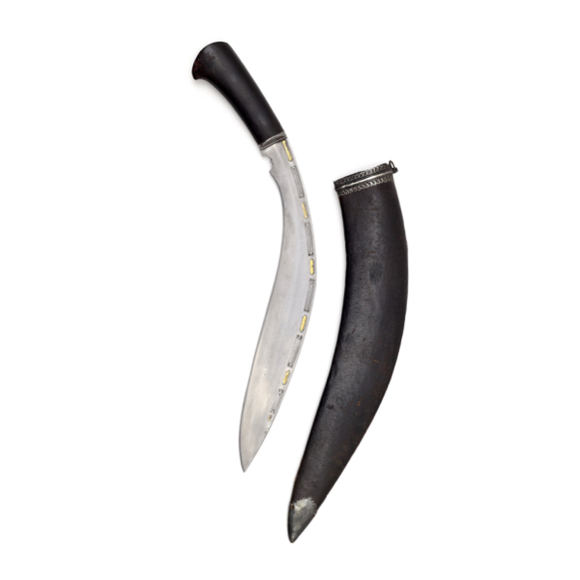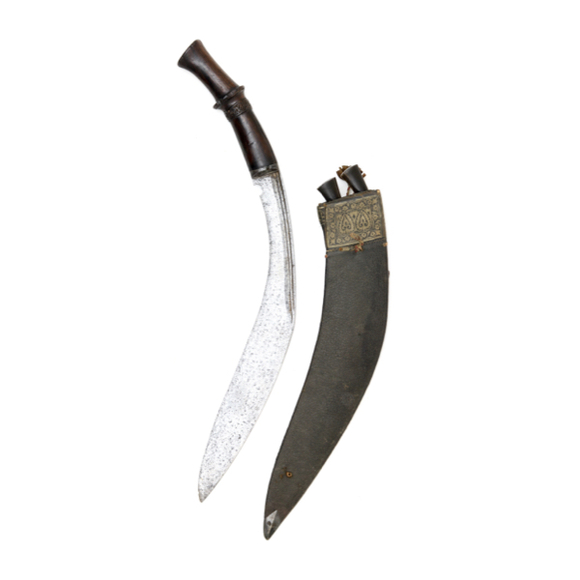Rarely seen today, a commoner's example with carved, bone hilt.

26.5 cm
Kingdom of Kandy, Sri Lanka (Ceylon)
Iron, silver, brass. Black coral (Antipathes orichalcea), non-CITES listed.
Circa 1700-1750
From a British collection
Introduction
These ornate Sinhalese knives are often indiscriminately called pihā-kaetta but the literature indicates that only the large chopper type with a slighly recurved blade is truly a piha-kaetta.1 Other varieties go by different names, these smaller ones can be called ul pihiya (උල් පිහිය) literally "sharp knife" in Sinhala.2
Fine knives like this were made in the Four Workshops or pattal-hatara, working exclusively for the king of Kandy, and were bestowed to nobles and officials together with the kasthané and a cane as a sign of rank and/or office. Others were presented as diplomatic gifts.
For more information, see my glossary article: Pihiya kättha.
Notes to introduction
1. H. Parker, Ancient Ceylon. Luzac & Co, London, 1909. Page 531. And P.E.P. Deraniyagala, Sinhala Weapons and Armor. Journal of the Ceylon Branch of the Royal Asiatic Society Volume XXXV. No. 95 Part III, 7th December 1942. (Reprint, Ken Trotman, 2009.) Pages 109 - 110.
2. Ibid.
This example
A nice old Kandyan knife of the mid 18th century. It has the typical slightly recurved blade, with remains of silver floral inlays, and a long deep groove that is plated with chased silver, as is the forte.
The bolster is much finer than most, which are generally solid and with sprays of liya-pata decoration. This one is elaborately pierced and chiseled with stylized floral designs and in addition a small sérapéṅdiya, a Sinhalese mythical bird.

The particularly ornate bolster of this knife, with its sérapéṅdiya.
The hilt is of clasic form and execution. It is carved out of a piece of Antipathes orichalcea, a non-CITES listed black coral species that is endemic around Sri Lanka. It is decorated with typical Sinhalese scrolling designs and plated with several pieces of silver. The pommel is particularly nicely done.
Condition
As is obvious from the pictures, the piece has seen better days. The blade has been subject to period sharpening, distorting the edge contours somewhat. Some losses to the silver, primarily near the point. See photos to get a complete idea about the condition. All in original condition though, no repairs or touchups.
Conclusion
A charming example. What is lacks in condition, it partly makes up for in intricacy and originality of execution. The more creative work among these is generally earlier, and I believe this example probably dates from the first half of the 18th century.













With a very fine Nepalese blade, but kard-like hilt and scabbard.
Early type with very shallow notch in the blade and little flare in the pommel.






